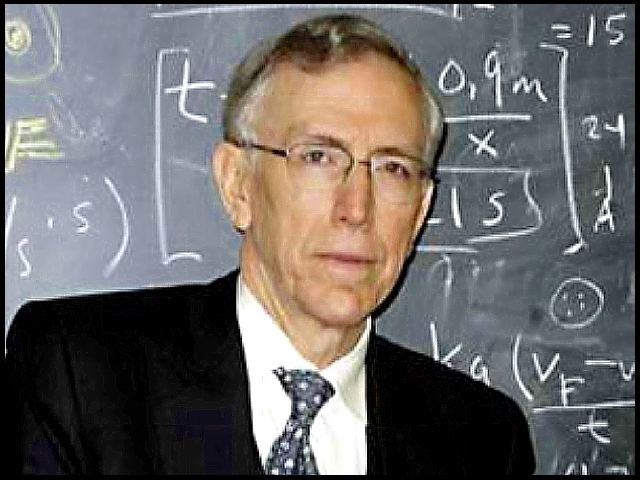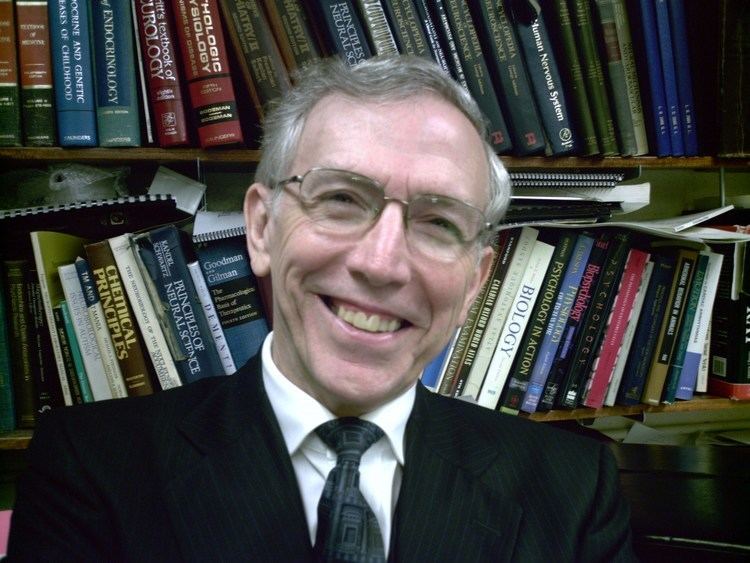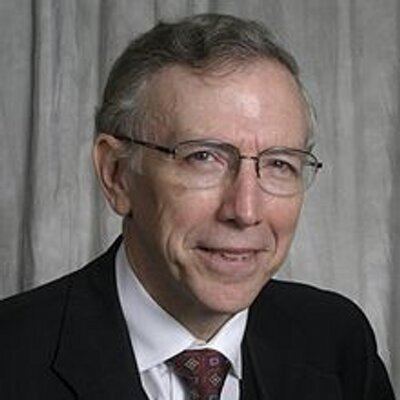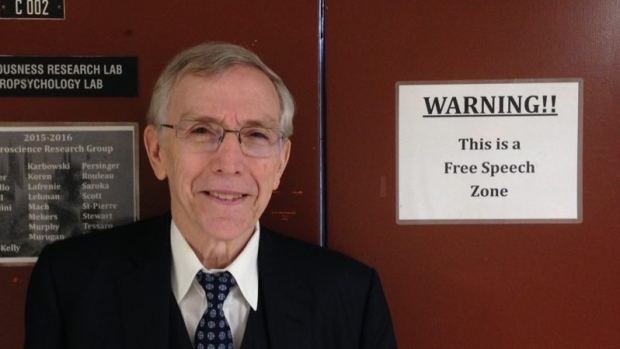Role University Professor | Name Michael Persinger | |
 | ||
Alma mater University of WisconsinUniversity of TennesseeUniversity of Manitoba Known for Director of Laurentian University's Consciousness Research Laboratory. Notable for his work in the field of neurotheology. Notable awards LIFT (Leader in Faculty Teaching), 2007TVO (Ontario) Best Lecturer 2007Laurentian University Research Excellence Award 1989Sudbury Regional Brain Injury Association Lifetime Membership Award 2001 Education Carroll University, University of Wisconsin-Madison, University of Manitoba, University of Tennessee Books Neuropsychological bases of God beliefs, ELF and VLF electroma, TM and Cult Mania, Space‑time transients and unus, The weather matrix an | ||
Nationality American and Canadian Residence Greater Sudbury, Canada | ||
Michael persinger on no more secrets
Michael A. Persinger (born June 26, 1945) is a physical neuroscientist and natural philosopher. He has argued that all phenomena including consciousness, spiritual experiences, and “paranormal events” can be explained by universal physical mechanisms and can be verified using the scientific method. Persinger has argued that quantitative differences in energy, rather than qualitative distinctions, are responsible for the apparent mind-body duality. Further, he has claimed that the structure and function of the brain determines the boundaries of human perception of the Universe, and that shared quantitative values connect local phenomena with fundamental properties of the cosmos - expanding upon the work of Sir Arthur Eddington.
Contents
- Michael persinger on no more secrets
- Michael persinger psychotropic drugs and nature of reality
- Early life
- Research and academic work
- Electromagnetic field effects
- Physiology and anatomy
- Clinical and experimental neuropsychology
- Quantum biophysics
- Geophysical and human interaction research
- Parapsychological research
- Physical cosmology
- Free speech
- Books and select publications
- References

Persinger has been a professor at Laurentian University since 1971. His major research themes have included electromagnetic field effects upon biological organisms, epilepsy, temporal lobe functions, properties of biophotons, geophysical-human interactions, physical cosmology and the quantifiable examination of what Persinger terms "low probability phenomena" such as time travel, parallel universes, and the universe as a simulation. He published over 500 technical articles in scientific journals, more than a dozen chapters, and seven books. His book with Ghislaine Lafreniere entitled Space-Time Transients and Unusual Events (1977) was written to search for patterns in phenomena that were not compatible with current scientific paradigms.

His most well-known hypotheses include the temporal lobes as the central correlate for mystical (god) experiences, subtle changes in geomagnetic activity as mediators of parapsychological phenomena, the tectonic strain within the Earth’s crust as the source of luminous phenomena attributed to unidentified aerial objects, and the importance of specific quantifications for energy (10−20 Joules), photon flux density (picoWatt per meter squared), and small shifts in magnetic field intensities (picoTesla to nanoTesla range) for integrating cellular activity as well as human thought with universal phenomena.
Michael persinger psychotropic drugs and nature of reality
Early life

Michael Persinger was born in Jacksonville, Florida and was reared primarily in Virginia, Maryland, and Wisconsin. He attended Carroll College from 1963 to 1964 and was graduated from the University of Wisconsin, Madison in 1967. He received his M.A. in physiological psychology from the University of Tennessee and his Ph.D. from the University of Manitoba in 1971.
Research and academic work

Michael Persinger's work focuses on the commonalities that exist between the sciences, and aims to integrate fundamental concepts of various branches of science. He organized the Behavioral Neuroscience Program at Laurentian University in Sudbury, Ontario, integrating chemistry, biology, and psychology. Persinger has published hundreds of peer-reviewed academic journal articles, contributing to several fields of study.
Electromagnetic field effects
Most of Persinger's research over five decades involved the effects of low intensity biofrequency magnetic fields produced experimentally or naturally upon living systems. His hypotheses assume that whereas chemical functions are determined by the complex structure of space (i.e., molecules), the equivalent functions of electromagnetic fields are determined by their complex temporal structures. He has postulated that optimal biological effects occur when the intensities, temporal complexities, and the application geometries of the applied fields approach those generated by the organism endogeneously. The energy produced by the complex temporally patterned magnetic fields within the biological volume rather than faradic induction was considered an essential process that produced emergent properties.
His later research (after 1990) focused upon employing circularly rotating, weak, temporally complex magnetic field patterns with changing velocities generated by programmable computer software upon photon emissions from aqueous reactions, changes in pH, cell function, and brain activity. One model indicated that all human thought could be affected by global subtle geomagnetic energies. Measurements by Kevin Saroka and Persinger demonstrated that the fundamental and harmonics of the Earth’s Schumann Resonance were discernible in normal human brain activity and both showed properties that could allow interactive effects upon all human brains.
Physiology and anatomy
Between 1974 and 1985 Persinger pursued the properties of brain mast cells and their responsiveness to environmental stimuli. He considered brain function to be the result of a matrix of anatomical structures. During the 1980s and 1990s he studied the relationships between changes in behavior and multi-focal brain anomalies associated with complex partial and limbic epilepsy and the emergence of sensitivities to stimuli typically not detected. Linda St-Pierre and he showed that the interaction between specific psychotropic drugs and limbic epilepsy in rodents contributed significantly to obesity. Nicolas Rouleau and he demonstrated that fundamental electrophysiological properties of the human brain were still evident in chemically fixed, post-mortem samples when appropriate neurochemicals were added or if the tissues were electrically stimulated. After 2000 he, Blake T. Dotta, Nirosha J. Murugan, and Lukasz M. Karbowski pursued the mechanisms by which temporally complex magnetic fields with specific point durations tuned to proton properties slowed the growth of cancer cells but not normal cells, a continuation of the original research by Carly A. Buckner and Robert M. Lafrenie.
Clinical and experimental neuropsychology
Most of Persinger’s published articles involved with consciousness have focused upon the persistence of experiences reported by individuals who display complex partial epilepsy within the normal population of people who were creative, subject to frequent paranormal experiences or who had sustained a mild impact of mechanical energy to the cerebrum. One of his notable experiments over about three decades involved a helmet (“the God Helmet”) whereby weak physiologically patterned magnetic fields were applied across the temporal lobes of hundreds of volunteers. The research received wide media coverage with high-profile visitors to Persinger's laboratory including Susan Blackmore and Richard Dawkins reporting positive and negative results respectively.
Experiences often associated with mystical reports such as out-of-body-experiences, intrusive thoughts, and the sensed presence were reported by hundreds of volunteers over decades of studying the phenomenon which were not associated with the subjects’ suggestibility. Subsequent theory and quantitative electroencephalographic measurements supported the contention that the sensed presence of a "sentient being" could be a normal brain-based prototype for god experiences or related mystical phenomena and was actually the left hemispheric awareness of the right hemispheric equivalent to the left hemispheric sense of self. Similar experiences were reported by people who had applied Todd Murphy’s technology. However other researchers either did not replicate or only partially replicated the experimental effects with variations of the helmet. In 2014, Tinoco and colleagues reported an independent replication of an experimental protocol which measured verbal behavior associated with field exposures using the helmet configuration.
Regarding Persinger's claims, the psychologist Richard Wiseman has written they have not been replicated and the "scientific jury is unconvinced". The research has also been criticized by psychologist Craig Aaen-Stockdale, writing in The Psychologist, prompting a published rebuttal by both Persinger and Murphy (co-authors). Other researchers have criticized Persinger for insufficient double-blinding and argued that there was no physiologically plausible mechanism by which his device could affect the brain. Persinger responded that the researchers had an incorrect computer setup and that many of his previous experiments were indeed carried out double-blind. Both claims are disputed.
Quantum biophysics
Persinger suggested that ultraweak photon emissions (picoWatt per meter squared) could serve as a medium through which local and non-local space could be connected. Power densities of spontaneous background photon emissions indicated potential solutions for Lorentz contractions and galactic sources that define the properties of space-time. He quantified the relationship between Casimir and magnetic energies and showed by calculation the dual properties of photons (particle/wave) could be derived if the electron displayed a discrete particle and wave value with each orbit. Persinger argued that macroscopic manifestations would involve the thixotrophic changes in water that included viscosity, pH, and interfacial water. With Nirosha J. Murugan and her colleagues, Persinger showed that spring water exposed for days within the dark to weak, temporally patterned magnetic fields emitted increased photon emissions within a specific band of visible light whose power occurred within the width of a cell membrane.
During the first decade of the 21st century, Persinger and his colleagues, Blake T. Dotta and David Vares, measured ultraweak photon emissions from human volunteers, experimental animals, cells, aqueous reactions, and air. Increases in numbers of photon counts under hyperdark conditions during cellular activity and certain types of cognition were associated with small decreases in local geomagnetic intensity with the potential for non-local effects. Persinger and his colleagues experimentally demonstrated that simultaneous application of temporally patterned magnetic fields and specific wavelengths of light to cells stored energy that was subsequently released as the same wavelength of light more than an hour later. He argued that ultraweak photon emissions contributed to cell-cell communication at great distances and carried the templates for the direction of signalling within cells and their interactions with applied electromagnetic fields. He and his colleagues showed that photon emissions or shifts in pH from two different reactions separated by non-traditional distances showed excess correlation (“entanglement”) if both shared the same circularly rotating, changing velocity magnetic fields. That is, the two spaces operated as if they were the same space.
Geophysical and human interaction research
One of Persinger's lifelong endeavors has been to establish a mechanism underlying geophysical-behavioral correlates using experimental simulations. The Tectonic Strain Theory (TST) developed by Persinger and John S. Derr predicted that luminous phenomena and associated physical effects were produced by manifestations of tectonic strain that often precedes by weeks to months seismic events within the region. Persinger argues that the labeling of these manifestations such as unidentified flying objects (UFOs) has changed over the centuries and reflects the characteristics of the culture. The support for the theory was primarily correlational. The temporal contiguity of reports of unidentified luminous phenomena preceding local seismicity due to injections of fluids was considered a quasi-experimental support for the hypothesis. Alternative models, developed by Persinger and David Vares, were quantified for interaction between quantum values and specific magnitude earthquakes, global climate variations, interactions with population densities, discrete energies as mediators of disease, and processes by which human cognition could be covertly affected by Schumann Resonances and geomagnetic activity. The hypothesis was recently criticized by a prominent blogger. Persinger has estimated that the total biomass of the planet was equivalent to the accumulated solar energy (solar constant) on the Earth’s surface. The shared photon origin was considered one source for “entanglement” between living systems.
Parapsychological research
Persinger has stated that he studied parapsychological phenomena because “the ultimate subject matter of science is the unknown”. He thought that verifiable spontaneous and experimental types of parapsychological phenomena were physical and associated with non-local interactions between human brain activity and geophysical processes. For example, Persinge presented evidence that the moderate strength correlation between geomagnetic activity at the time of a precognitive experience and what the geomagnetic activity would be two to three days before the event was considered supportive evidence that energetic antecedents before the event not the event was being discerned. Review of the physical properties with W. G. Roll of verified poltergeist phenomena indicated the prevalence of physical properties coupled to increases in geomagnetic activity due to minute changes in the Earth’s rotational (angular) momentum. During the 1980s he showed both experimental and spontaneous cases of “telepathy and clairvoyance (“remote viewing”) were more likely when the global geomagnetic activity was lower than the days before or afterwards. Measurement of the brain activity of “psychic” individuals such as Ingo Swann and Sean Harribance revealed unusual electrical brain patterns in the right hemisphere (parahippocampal region), increased photon emissions from the right cerebral hemisphere and small decreases in the intensity of the geomagnetic field when the details of their experiences were most accurate.
Physical cosmology
Later in his career, Persinger and his lifelong colleague Stanley Koren quantitatively, through calculations, explored the non-traditional relationships between the smallest and largest increments of space and time. For example, the time required for the Universe to expand one Planck’s length was Planck’s time and the time for Planck’s length to expand one Planck’s length was the age of the Universe. This duration for a proton was about 3 ms which considered the optimal point duration for interactive magnetic fields. Dark matter and energy were considered matter and energy yet to occur before the final epoch. Persinger has authored several publications in physical cosmology relating gravity and light to universal constants. Three different approaches solved for a velocity associated with entanglement of 1023 meters per second which predicted that excess correlation could show a discrete latency. Because the product of this velocity, the speed of light, and upper-boundary for the rest mass of a photon resulted in 10−20 J, Persinger has hypothesized that photons could have both local and non-local effects.
Free speech
In 2016, Persinger was controversially removed as the instructor of a first year psychology course. The provost at Laurentian said they objected to his asking students to sign a statement of understanding that vulgar language might be used in the class. The Laurentian University Faculty Association filed a grievance against the school for violating Persinger's academic freedom. Current and former students also protested the decision.
"One of my techniques is to expose people to all types of different words [...] silly words, complex words, emotional words, profane words. Because they influence how you make decisions and how you think."
